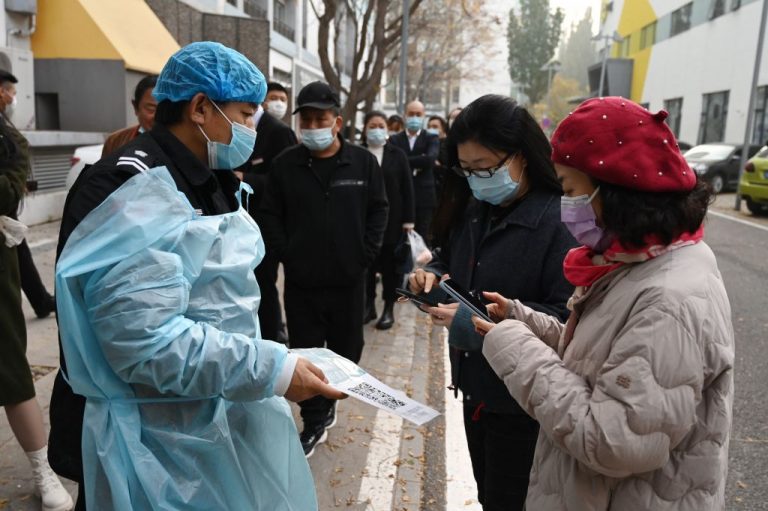More than 1,000 officially confirmed new cases of COVID-19 have been reported across much of China, with more than two thirds of the country’s provinces reporting locally transmitted cases.
China’s epidemic situation could be seeing its worst uptick since 2020, when the novel coronavirus pandemic was first spreading out of Wuhan in central China.
The epidemic has been soaring in Beijing and other provinces since mid-October. More than 100 cases have been confirmed every day since Nov. 2.
With the Sixth Plenary Session of the CCP’s current Central Committee beginning in Beijing on Nov. 8, the regime appeared tense as they expanded urgent epidemic control measures. The surge also has officials scrambling as it coincides with the upcoming Beijing Winter Olympics slated for 2022.
The Chinese Health Commission reported on Nov. 3 that 104 new cases were confirmed in China, out of which 31 were asymptomatic.
Success
You are now signed up for our newsletter
Success
Check your email to complete sign up
According to a report by Global Times, as of 7:00 pm on Nov. 4, Dalian city in Liaoning Province and Chengdu city in Sichuan Province had each reported one more confirmed case.
This was the third consecutive day with more than 100 confirmed cases since Nov. 2, where 109 cases were confirmed. More than half of the first-level administrative regions have been occupied by epidemic control measures.
On Nov. 6, Wu Liangyou, deputy director for the Chinese Center for Disease Control and Prevention (CDC), stated at a press conference by the State Council that as of midnight on Nov. 5, there were 918 confirmed cases of infection reported across the country, sweeping across 20 provinces and 44 cities. It was also reported that the epidemic is currently being spread by various fast and widespread transmission chains.
According to various sources, this wave of local outbreaks originating in northwestern China is considered to be the most serious rebound since the pandemic began in Wuhan at the end of 2019. In just over two weeks, more than 700 cases have been confirmed.
The official number of confirmed COVID-19 cases and deaths is widely believed to be a fraction of the true figures. The CCP claims that less than 100,000 cases have been confirmed since the beginning of the pandemic in late 2019; however, various forms of indirect data suggest the pandemic has affected China on a far larger scale.
Multiple citizen journalists, such as Fang Bin and Zhang Zhan, have been arrested and abused in custody for daring to report on the epidemic situation in Wuhan.
READ MORE:
Chinese Journalist Zhang Zhan, Jailed for Exposing Wuhan Virus in 2020, ‘Close to Death’ in Prison
The DCD did not report new cases in Beijing. However, the Beijing Municipal Information Office stated 39 local cases were confirmed in a briefing held on Nov. 3. About 70 percent were infected through family and social gatherings. The source of other cases was still unknown.
Bloomberg and Reuters reported that the CCP regime is on high alert, adopting a “zero-tolerance” policy to combat the surges, enforcing extreme closure and control measures. Beijing was also fenced off in an attempt to keep the infections at bay.
On Nov. 3, Beijing canceled 60.4 percent of scheduled flights at Daxing Airport and 49.8 percent of flights at Beijing Capital International Airport. It also ordered 123 train stations in 23 regions across the country to stop selling tickets to Beijing.
In addition, the government also stopped 13 train routes to areas with serious outbreaks — including three to Nanjing, two to Yangzhou, three to Zhangjiajie, and five to Zhengzhou.
Beijing officials have enforced a stay-at-home order, demanding citizens not to leave the country or even exit the country’s capital. Vehicles from other areas are also not allowed to enter the inner part of Beijing’s 2nd Ring Road. The highway which encircles central Beijing and inter-provincial travel has also been halted.














